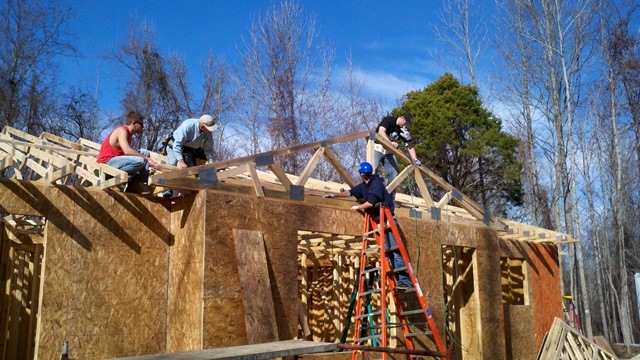 If there is one thing that throws many new construction companies for a loop (and even some more established companies), it is estimating. Just last week on one of the forums an owner was asking; who should eat this cost? The issue, he dropped a set of plans off for his supplier to estimate not only the price of the materials needed but the quantity. The issue as I recall was they were off by at least 4 squares (100 SF = 1 square), forgot ½ the vents & numerous other issues resulted in him doing the job at a loss.
If there is one thing that throws many new construction companies for a loop (and even some more established companies), it is estimating. Just last week on one of the forums an owner was asking; who should eat this cost? The issue, he dropped a set of plans off for his supplier to estimate not only the price of the materials needed but the quantity. The issue as I recall was they were off by at least 4 squares (100 SF = 1 square), forgot ½ the vents & numerous other issues resulted in him doing the job at a loss.
While one might think that it is the suppliers fault or issue, they were covered with a little stamp & some fine print which said; hey while we do our best to be accurate, we are not liable if there is an error. On the flip side of the coin a few weeks before that I was at another companies site & there was over a pallet of shingles (42 bundles to a pallet aka 14 squares) still sitting on the ground & the roof in question was essentially complete. While one would hope that the supplier would take those shingles back, they might not be able to if they were special ordered. As many of us know, being just a bundle short can cost you 3x times the amount when you factor in materials & time, but having a ton extra costs can cost you as well.
So how might one avoid getting taken for a ride? The best advice come from Ronald Reagan who simply said that while one can trust, one should also verify. I know, for many of us who wear so many hats, just where do you find the time to do that? I essentially use the spot check approach. For example, I may look at the plans & count outlets in the case of an electrician. If the code requires at least 30 & they only have 25 listed, well then we need some clarification & I will send it back to them asking them to recheck the numbers & remind which code we are using. For roofing & other materials, I will typically check the square count, & look at the numbers for a few other items – if those look good it is probably good to go. If one or two items then I know I need to tear into it more &/or double check my counts.
Along the same lines, I pretty much have a good clue on what some of the other specialty trades are going to bid the job for. While I will quickly jump on the phone if I think the numbers are too high, I will just as quickly jump on the phone if I think the numbers are too low. It could simply be that they missed something or some specification got overlooked. While some may call it “just business” I want everyone to make money on the job. Not only does this eliminate the “why should I care I am doing this at a loss” mentality, but it also helps guarantee that if something does come up down the road, that they will still be in business & hopefully have my back like had theirs.


I have always been in the habit of doing my own estimates for materials. I will then give the plan to the supplier and see what he comes up with and if we agree then great. However if there is a discrepancy I go through again and see what side the error occurred- mine or his. Ultimately the final decision comes down to my call. As a side note, I also do this with subs too and that way I can see if they are on the ball or maybe I should reconsider using them. Makes for extra work in the beginning but saves you later.
Thanks for chiming in Todd & I hear you on that – it is amazing seeing how many places need some serious help in that department. Though I must say on the flip side, I have done a few flubs myself which were fortunately either caught on my double check or when the two sets of numbers didn’t match up with a suppliers.
I have always been in the habit of doing my own estimates for materials. I will then give the plan to the supplier and see what he comes up with and if we agree then great. However if there is a discrepancy I go through again and see what side the error occurred- mine or his. Ultimately the final decision comes down to my call. As a side note, I also do this with subs too and that way I can see if they are on the ball or maybe I should reconsider using them. Makes for extra work in the beginning but saves you later.
Thanks for chiming in Todd & I hear you on that – it is amazing seeing how many places need some serious help in that department. Though I must say on the flip side, I have done a few flubs myself which were fortunately either caught on my double check or when the two sets of numbers didn’t match up with a suppliers.